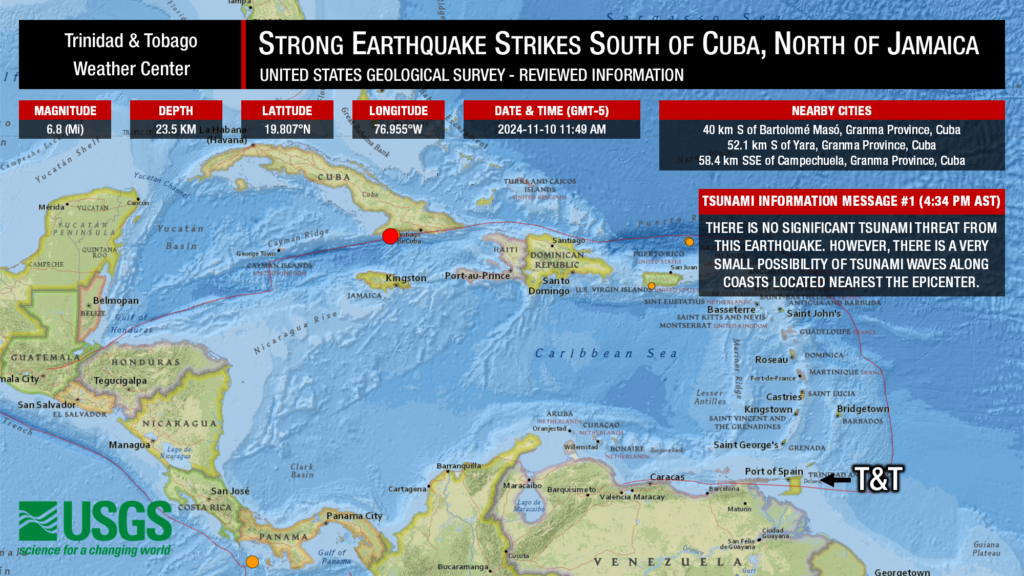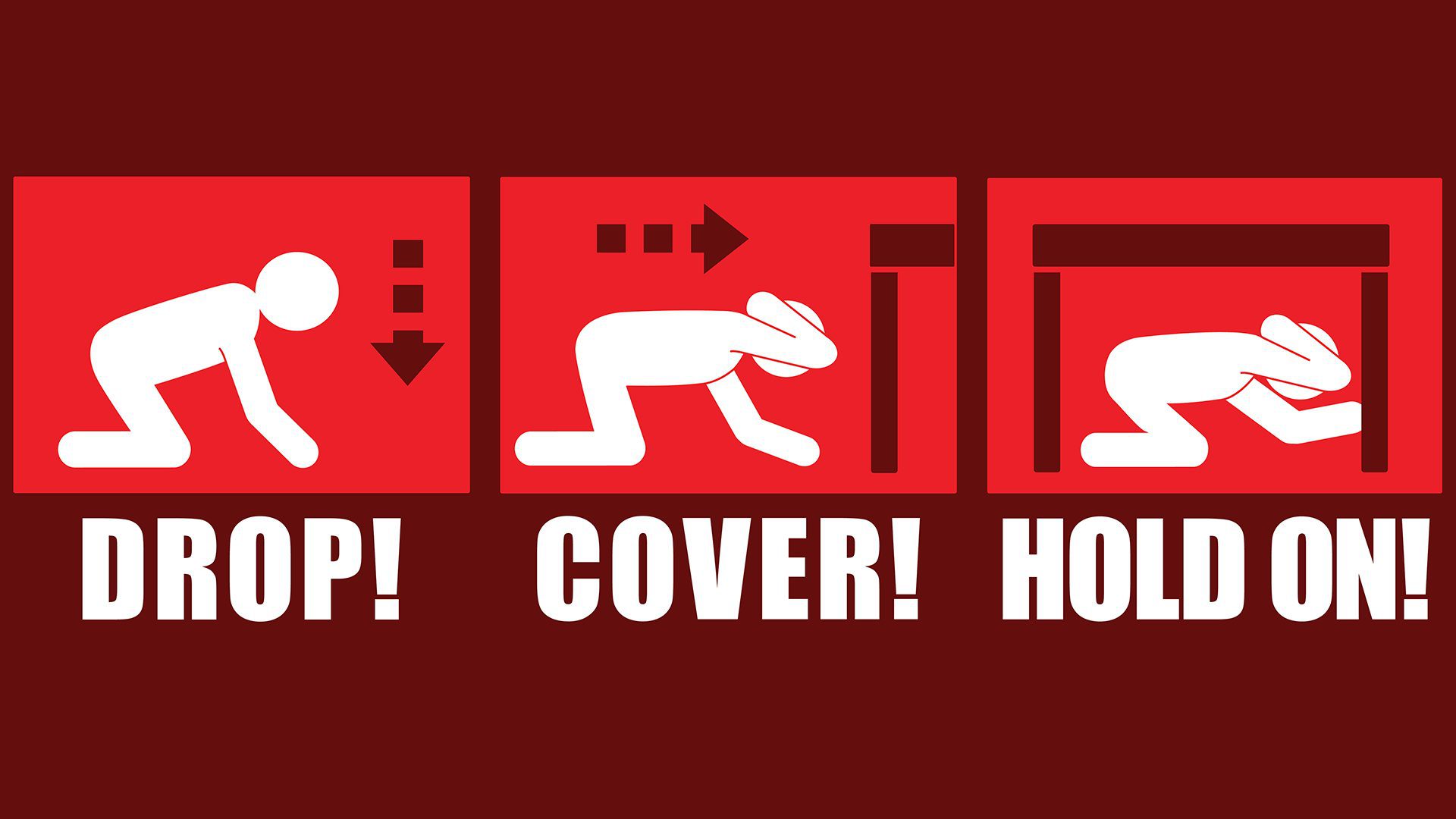Strong Earthquake Strikes North of Jamaica
At 11:49 AM (Jamaica Time, 12:49 PM T&T time) on Sunday, November 11t, 2024, the United States Geological Survey recorded a strong magnitude 6.8 (Mi) earthquake south of Cuba, and approximately, 150 kilometers north of Jamaica. There are no immediate reports of damage or injuries as a result of this quake.
The quake struck at a relatively shallow depth of 13.0 kilometers and was located at 19.807°N, 76.955°W. Strong shaking was reported across Jamaica and Cuba.

The Pacific Tsunami Warning Center issued a Tsunami Information Statement at 11:50 AM (Jamaica time) Sunday advising that based on all available data, there is no significant tsunami threat to Caribbean coasts from this earthquake, but there is the very small possibility of tsunami waves along coasts located near the epicenter.
There are four conditions necessary for an earthquake to cause a tsunami:
- The earthquake must occur beneath the ocean or cause material to slide within or into the ocean.
- The earthquake must be strong, at least magnitude 6.5.
- The earthquake must rupture the Earth’s surface and occur at a shallow depth—less than 70 kilometers below the surface.
- The earthquake must cause vertical seafloor movement (up to several meters).
While the first three conditions were met, Sunday morning’s earthquake occurred along the Cayman Trench, a strike-slip boundary where the Caribbean Plate and the North American slide past one another. Earthquakes along strike-slip fault generally do not create significant vertical movement.
This earthquake was the second felt quake today, with a magnitude 5.9 striking in the same area approximately one hour prior.
Note that different seismic monitoring agencies use different methods, or several methods, for processing quake parameters across the globe. Each method has its limitations and will likely produce different results within the range of the data’s uncertainty. This is generally accepted within the scientific community.
Read More
Earthquake magnitude is a quantitative, mathematical calculation to measure the energy released at the source of an earthquake. On the other hand, earthquake intensity is the qualitative…
Earthquakes cannot be predicted based on current research and technology. Earthquake prediction is a branch of seismology focused on predicting an exact time, location, and magnitude of an…
Earthquakes in the Eastern Caribbean
While Sunday’s earthquakes occurred in the western Caribbean region, Trinidad and Tobago and the surrounding region are very seismically active. Across the Eastern Caribbean, over 2,200 earthquakes are recorded annually. Since 1990, the University of the West Indies Seismic Research Centre records an annual average of 280 earthquakes in the Trinidad and Tobago region (area bounded by 9.5°- 11.5°N & 59.5°W – 63.5°W). Of these 280 quakes, 50 of these seismic events are, on average, above magnitude 3.5.
Most earthquakes occur northwest of Trinidad in an area known as North of the Paria Peninsula, which has the second-highest seismicity in the Eastern Caribbean. According to the UWI SRC, approximately 65 events of magnitude 2.1 and above are located in the area annually.
However, the UWI SRC has said regional seismic and volcanic activity has been elevated for several years in their annual report for 2020 to 2021.
On average, the Eastern Caribbean has seen a pattern of major (M7.0-M7.9) quakes every 20 to 30 years. That pattern has stayed true. The last major (M7.0-7.9) quake occurred north of Martinique in 2007.
Historical patterns indicate that great quakes (M8.0+) on the Richter Scale have occurred every century in the region. The probability of another event at that level is high since the last >M8.0 earthquake occurred in 1843. While it is impossible to say definitively when the next great quake would occur in the region, the time since the last one is now more than 170 years ago.
It is important to note seismic activity *cannot* be predicted – meaning the precise time, date, magnitude, depth, etc., cannot be known ahead of time based on current research and technology.
Now is the time to create or go over your earthquake preparedness plan and know what to do during, before, and after an earthquake.




